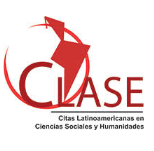Virtualizando a intimidade: Tecnologias da Informação e Comunicação e Famílias Transnacionais em Terapia
Palavras-chave:
Imigração, Famílias, Transnacional, Tecnologias de comunicação da Informação.Resumo
As Tecnologias de Comunicação da Informação (TICs) são características onipresentes na vida familiar do imigrante. Disponíveis, amplamente acessíveis e altamente adaptáveis as TICs transformaram a experiência de imigração num processo transnacional com as redes familiares redesenhadas, mas não perdidas. Ser uma família transnacional não é um fenômeno novo. O transnacionalismo, entretanto, tem sido reservado, historicamente, para o imigrante de classe mais abastada profissional e politicamente que pode viajar livremente e usar formas caras de comunicação, antes da emergência de tecnologias acessíveis. Este artigo revê, sistematicamente, a literatura de pesquisa de investigação do impacto potencial das TICs nas vidas das famílias transnacionais e como estas as utilizam. A grande penetração das TICs também coloca em questão alguns métodos como estudiosos conceituaram a experiência imigratória. O uso adequado da tecnologia na terapia familiar fortalece abordagens culturalmente competentes e imparciais para enfocar as necessidades dessas famílias. A terapia de famílias transnacionais ilumina alguns dos potenciais que essas tecnologias introduzem na prática dos clínicos de relações.
Downloads
Referências
Alonso, A., Oiarzabal,P.J. (2010). Diasporas in the new media age. Indentity,politics, and community. Reno,NV: University of Nevada Press.
Anderson- Butcher, D., Lasseigne,A., Ball,A.,Brzozowski, M., Lehnert, M., McCormick, B.L. (2010). Adolescent weblog use: Risky or protective? Child and Adolescent Social Work Journal, 27(1): 63-77.
Bacigalupe,G. (2010). Supervision 2.0: E- supervision a decade later. Family Therapy Magazine, 9(1): 38-41.
Bacigalupe,G. (in press). Is there a role for social technologies in collaborative health? Family, Systems, and Health.
Baldassar, L. (2007a). Transnational families and aged care: The mobility of care and the migrancy of ageing. Journal of Ethnic and Migration Studies, 33(2): 275-297.
Baldassar, L. (2007b). Transnational families e provision of moral and emotional support: The relationship between truth and distance. Identities, 14(4): 385-409.
Baldassar, L. (2008). Missking kin and longing to be together: Emotions and the construction of co-presence in transnational relationships. Journal of Intercultural Studies, 29(3): 247-266.
Baldassar, L., Wilding, R., Baldock, C. (2007). Long-distance caregiving: Transnational families and the provision of care. In I Paoletti (Ed.), Transnational families and the provision of aged care (pp.201-227). New York: Nova Science.
Basch,L., Schiller, N.G., Blanc,C.S. (1994). Nations unbound: Transnational projects and deterritorialized nation-states. London: Routledge.
Bedgood,R., Sadursky, R., & Schade, R.R.(2007). The use of the internet in data assimilation in rare diseases. Digestive Diseases and Sciences, 52(2): 307-312.
Bhatia, S., Ram, A. (2009). Theory identity in transnational and diaspora cultures: A critical approach to acculturation. International Journal of Intercultural Relation, 33, 140-149.
Bohr, Y., Tse, C. (2009). Satellites babies in transnational families: A study of parent’s decision to separate from their infants. Infant Mental Health Journal 30(3): 265-286.
Brinkerhoff, J.M. (2009).Digital diasporas: Identity and transnational engagement. New York : Cambridge University Press.
Bryceson, D.F., Vuorela, U. (2002). Transnational families in the twenty-first century. In D.F. Bryceson & U. Vuorela (Eds.), The transnational family: New European frontiers and global networks (pp. 3-30). New York International Publishers.
Byun, S., Ruffini, C., Mills, J.E.,Douglas, A.C., Niang, M., Stepchenkova, S., et al.( 2009). Internet addiction: Metasynthesis of 1996-2006 quantitative research. CyberPsichology and Behavior, 12 (2): 2003-2007.
Carling, J. (2008). The human dynamics of migrant transnationalism. Ethnic and Racial Studies, 31 (8): 1425-1477.
Castro, L.A., Gonzales, V.M. (2009); Hometown websites: Continuous maintenance of crossborder connections. Paper presented at the Fourth International Conference on Communities and Technologies,University Park, MD.
Chirkov, V. (2009).Critical psychology of acculturation: What do we study and how do we study it, when we investigate acculturation? International Journal of Intercultural Relations, 33, 94-105.
Chun, K.M., Organista, P.B., Marin,G. (Eds.) (2003). Acculturation: Advantacen in theory, measurement, and applied research. Washington, DC: American Psychological Association.
Delmonico, D.L., Griffin, E.J. (2008). Cybersex and the E-teen: What marriage and family therapists should know. Journal of Marital and Family Therapy, 34(4): 431-444.
Erel, U. (2002). Reconceptualizing motherhood: Experiences of migrant women from Turkey living in Germany. In D. Bayceson & U. Vuorela (Eds.), The transnational family: New Europeans and global networks (pp. 127-146). New York: Berg.
Estevez, S.M. (2009). Is nostalgia becoming digital? : Ecuadorian diaspora in the age of global capitalism. Social Identities, 15 (3): 393-410
Falicov, C.J. (2007). Working with transnational immigrants: Expading meanings of family, community, and culture. Family Process, 46(2): 157- 171.
Finch, J. (1989). Family obligations and social change. Cambridge, UK: Polity Press.
Fraenkel, P. (2001a). The beeper in the bedroom: Technology has become a therapeutic issue. The Psichotherapy Networker,25, 22-29, 64-65.
Fraenkel, P. (2001b). The place of time in couple and family therapy. In K.J. Daly (Ed.), Minding the time in family experience: Emerging perspectives and issues (pp. 283-309). Killington, Oxford: Elsevier Science.
Goldberg, P.D., Peterson, B.D.,Rosen, K.H., Sara, M.L. (2008). Cybersex: The impact of a contemporary problem on the practices of marriage and family therapists. Journal of Marital and Family Therapy, 34 (4): 469-480.
Gonyea, J.L.J. (2004). Internet sexuality: Clinical implications for couples. American Journal of Family Therapy, 32(5): 375-390.
Griffiths, K.M., Calear, A.L., Banfield, M., Tam, A. (2009). Systematic review on Internet support groups (ISGs) and depression: What is known about depression ISGs? Journal of Medical Internet Research, 11(3): 1-11.
Hamel, J.Y. (2009). Information and communication technologies and migration. Geneva: United Nations Development Programme.
Hardy, K.V., Laszlofty, T.A (2002). Couple therapy using a multicultural perspective. In A.S. Gurman & N.S. Jacbson (Eds.), Clinical handbook of couple therapy (pp.569-596). New York: The Guilford Press.
Hertlein, K.M. (2008). Problems created by technology within our couple and family relationships. Journal of Marital and Family Therapy, 34(4): 429-430.
Hertlein, K.M., Webster, M. (2008). Technology, relationships, and problems: A research svnthesis. Journal of Marital and Family Therapy, 34(4): 445-460.
Heymann, J. (2006). Forgotten families: Ending the growing crisis confronting children and working parents in the global economy. Oxford: Oxford University Press.
Hondagneu-Sotelo,P. (2001). Domestica: Immigrant workers cleaning and caring in the sadows of affluence. Berkeley, CA: University of California Press.
Horgan, Ã., Sweeney, J. (2010). Young students’ use of the internet for mental health information and support. Journal of Psychiatric and Mental Health Nursing, 17 (2): 117-123.
Horst, H.A. (2006). The blessings and burdens of communication: Cell phones in Jamaican transnational social fields. Global Networks, 6(2): 143-159.
Horst, H.A., Miller, D. (2006). The cell phone: An anthropology of communication. Oxford: Berg.
Horton, S. (2009). A mother’s heart is weighed down with stones: A phenomenological approach to the experience of transnational moderhood. Cultura, Medicine and Psychiatry, 33(1): 21-40.
Ito, M., Okabe, B. (2005). Technossocial situations: Emergent structuring of mobile e-mail use. In Ito, M., Okabe, B., M. Matsuda (Eds.), Personal,portable,pedestrian: mobile phones in Japanese life (pp. 257- 276). Cambridge, MA: MIT Press.
Kirschenera, P.A., Karpinskib, A.C. (in press). Facebook and academic performance. Computers in Human Behavior, 1237-1245. Doi: 10.1016/j.chb.2010.03.024
Kummervold, P.E., Gammon, D.,Bergvik,S.,Johnsen, J.A., Hasvolv, T., Rosenvinge,J.H. (2002). Social support in a wired world: Use of online mental health forums in Norway. Nordic Journal of Psychiatry, 56(1): 59-65.
Landau,J., Garret, J., Webb, R. (2008). Assisting a concerned person to motivate someone experiencing cybersex into treatment: Application of Invitational Intervention: The ARISE Model to cybersex. Journal of Marital and Family Therapy, 34(4): 498-511.
Lanigan, J.D. (2009). A sociotechnological model for family research and intervention: How information and communication technologies affect family life. Marriage and Family Review, 45(6-8): 587-609.
Lenhart, A., Madden, M. (2005). Teens and technology: Youth are leading the transition to a fully wired mobile nation. Washington, DC: Pew Internet & American Life Project. Retrieved from http://www.pewinternet.org/~/media//Files/Reports/2005/PIP_Teens_Tech_
July2005web.pdf.pdf
Lenhart, A.,Purcell,K.,Smith, A., Zickuhr,K. (2010). Social media & mobile internet use among teens and young adults. Washington, DC: Pew Internet & American Life Project.
Levitt, P. (2009). Roots and routs: Understanding the lives of the second generation transnationally. Journal of Ethnic and Migration Studies, 35(7): 1225-1242.
Levitt, P., Schiller, N.G. (2004). Conceptualizing simultaneity: A transnational social field perspective on society. International Migration Review, 38(3): 1002-1039.
Licoppe,C. (2004). ‘Connected’ presence: The emergence of a new repertoire for managing social relationships in a changing communication technoscape. Environment & Planning D: Society and Space, 22(1): 135-156.
Licoppe,C., Smoreda, Z. (2005). Are social networks technologically embedded? How networks are changing today with changes in a communication technology. Social Networks, 27(4): 317-335.
Mahalingam, R. (2006). Cultural psychology of immigrants. Mahwah, NJ: Lawrence Erlbaum. McGoldrick, M., Hardy, K.V.(2008). Re-visioning family therapy: Race, culture, and gender in clinical practice (2nd ed). New York: Guilford Press.
Mesch, G.S. (2006). Family relations and the Internet: Exploring a family boundaries approach.
Journal of Family Communication, 6(2): 119-138.
Moreno, M.A., Parks, M.R., Zimmerman, F.J., Brito, T.E., Christakis, D.A. (2009). Display of health risk behavior on MySpace by adolescents: Prevalence and associations. Archives of Pedriatrics and Adolescent Medicine, 163(1): 27-34.
Morrison, C.M., Gore, H. (2010). The relationship between excessive Internet use and depression: A questionnaire-based study of 1,319 young people and adults. Psychopathology, 43,121-126.
Murphy, E.J., Mahalingam, R. (2004). Transnational ties and mental health of Caribbean immigrants. Journal of Immigrant Health, 6(4): 167-178.
Oravec, J.A. (2000). Internet and computer technology hazards: Perspectives for family counseling. British Journal of Guidance and Counselling, 28(3): 309-324.
Palfrey,J., Boyd, D., Sacco, D.(2010). Enhancing child safety and online technologies: Final report of the Internet Safety Technical Task Force. Durham, NC: Carolina Academic Press.
Panagakos, A.N., Horst, H.A. (2006). Return to Cyberia: Technology and the social worlds of transnational migrants. Global Networks, 6(2): 109-124.
Weingarten, K. (2004). Witnessing the effects of political violence in families: Mechanisms of intergenerational transmission and clinical interventions. Journal of Marital and Family Therapy, 30(1): 45-60.
Whitty, M.T., Quigley, L.L.(2008). Emotional and sexual infidelity offline and in cyberspace. Journal of Marital and Family Therapy, 34(40: 461-468.
Wilding, R. (2006). Virtual intimacies? Families communicating across transnational contexts. Global Networks, 6(2): 125-142.
Ybarra, M.L., Mitchell, K.L. (2005). Exposure to Internet pornography among children and adolescents: A national survey. CyberPsychology and Behavior, 8(5): 473-486.
Downloads
Como Citar
Edição
Seção
Licença
Autores que publicam nesta revista concordam com os seguintes termos:- Autores mantém os direitos autorais e concedem à revista o direito de primeira publicação, com o trabalho licenciado simultaneamente sob uma Licença Creative Commons Attribution após a publicação, permitindo o compartilhamento do trabalho com reconhecimento da autoria do trabalho e publicação inicial nesta revista.
- Autores têm autorização para assumir contratos adicionais separadamente, para distribuição não-exclusiva da versão do trabalho publicada nesta revista (ex.: publicar em repositório institucional ou como capítulo de livro), com reconhecimento de autoria e publicação inicial nesta revista.
- Autores têm permissão e são estimulados a publicar e distribuir seu trabalho online (ex.: em repositórios institucionais ou na sua página pessoal) a qualquer ponto antes ou durante o processo editorial, já que isso pode gerar alterações produtivas, bem como aumentar o impacto e a citação do trabalho publicado (Veja O Efeito do Acesso Livre).

















